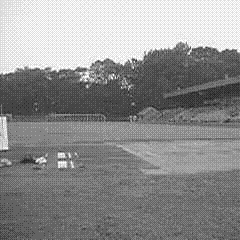Willkommen
Welcome
Bienvenue

Diese Seite
Die Geschichte der ersten Bytes dieser Website beginnt im Jahr 2000. Die damalige Technik: ein 56k Modem, mit dem mittels FTP-Client HTML-Seiten mühsam hoch und heruntergeladen wurden. Dreamweaver und Frontpage hießen die state-of-the-art-Tools, die es erlaubten, HTML-Seiten zu bauen. Auch Word verstand es früh, als WYSIWYG-Editor, HTML zu generieren. Die meisten dieser Tools, Microsofts Produkte voran, generierten jedoch scheußlichen HTML-Code.
Damals
Um nun möglichst sauberen HTML-Code zu entwickeln, der damals zumeist im Internet-Explorer, Netscape- oder Opera-Browser lief, war einige manuelle Nachbearbeitung nötig oder man programmierte selbst. Das aufkommende Angebot an Open-Source Software brachte Webeditoren wie NVU hervor. Flash, Java-Applets, JavaScript, PHP und Datenspeicherung in MySQL-Datenbanken wurden immer beliebter und kamen auch auf dieser Seite immer wieder zum Einsatz.
Entwicklung
CSS verbreitete sich zudem immer stärker und erlaubte es, Inhalt von Design zu trennen, wie es schon jahrelang z.B. von TeX bekannt war. Die ersten Content-Management Systeme wie Wordpress, Joomla etc. machten es schließlich selbst dem Laien möglich, komplexe Websites ohne Programmierkenntnisse zu erstellen. Sie basieren ebenso auf HTML, CSS, PHP und Datenbanken wie MySQL, wovon der Benutzer selbst jedoch wenig merkt.
Idee
Meine Philosophie auf dieser Seite sieht vor, möglichst puristisch nur HTML5 und CSS zu verwenden. Schlagworte wie HTML5, responsives Design und Flexbox-Modell machen in der Tat wieder Lust, selbst HTML-Seiten zu erstellen. Die als Aufmacher eingesetzten Bilder sind Fotos, die mit Hilfe von künstlichen neuronalen Netzen erzeugt wurden. Zu künstlichen neuronalen Netzen ist auch auf den hiesigen Unterseiten eine Menge zu finden.
Überblick
Die Seite ist in verschiedene Bereiche unterteilt, die sich mit den Themen Schule, Science und Software beschäftigen. Es gibt dort Materialien und Links, hauptsächlich für den Informatikunterricht. Der Bereich Science erinnert an meine ehemalige Profilseite an der Johannes Gutenberg Universität Mainz, während der Bereich Software eine Sammlung aktueller aber auch alter Softwareprodukte meiner Domain slxs.de ist.
Privates
Seit 1988 ist Leichtathletik meine Sportart, in der ich u.a. dreimal Westfalenmeister (Jugend, Männer) und zweimal Deutscher Meister (M40) werden durfte. Daneben ist Volleyball meine Leidenschaft, die ich auf der Schule entdeckte, auf der ich heute unterrichte. Von 1995 bis 2007 war ich musikalisch als Hauptorganist in St. Ludgerus, Elte unterwegs. Ich meide Windows und habe seit dem 3. Semester Informatik ein Faible für künstliche neuronale Netze.





